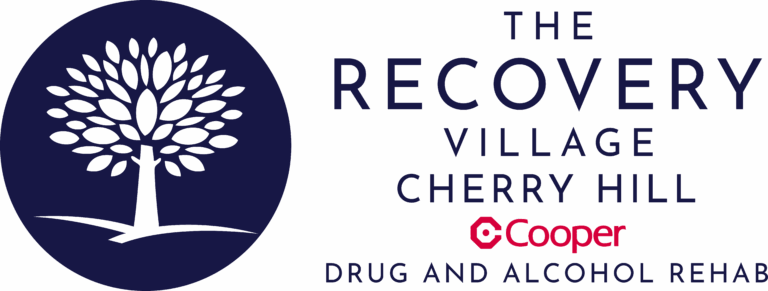Underage drinking is common. Statistics show that nearly one-fourth of teens 14–15 had at least one drink in 2019. Given the high prevalence of teen drinking, many experts have questioned whether alcohol is a gateway drug. Addiction research provides some answers, and the Gateway Drug Theory is central to much of this research.
What Is a Gateway Drug?
A gateway drug is a substance that could be habit-forming but not potentially addictive in nature. This typically refers to alcohol, cannabis and nicotine. A “gateway theory” suggests adolescents experimenting with these substances are more likely to use addictive substances. Using a gateway drug is theorized to impact the use of addictive substances later in life.
Is Alcohol a Gateway Drug?
Alcohol use has been shown to affect other substance use down the road. A recent study involving U.S. 12th graders found that most participants who had used multiple substances tried alcohol before beginning tobacco or marijuana use. The study also revealed that people who started using alcohol in sixth grade were more likely to have used illegal drugs than those who began drinking in ninth grade or later.
Recovery Can Be Life Changing
Whether you or a loved one is struggling with addiction, our expert team is here to guide you every step of the way. Don’t wait— reach out today to take the first step toward taking control of your life.
“My life has became something that I’m proud of and something I can be grateful for.“
– Joseph McDermott, The Recovery Village Cherry Hill Alumni
Additional research has shown that using alcohol at age 15 increases the risk that someone will inject drugs during adulthood. These studies provide a large amount of evidence suggesting that alcohol use begins before using illegal drugs and is a gateway drug.
Alcohol and Other Gateway Drugs
Alcohol is often cited as a gateway drug, but it is not the only substance thought to lead to illegal drug use down the road. These substances are also labeled as gateway drugs.
Alcohol and Marijuana
There has been much controversy surrounding marijuana as a gateway drug. Despite disagreement on the dangers of marijuana, a recent report found that people who use marijuana are 2.76 times more likely to transition to opioid use and 2.52 times more likely to develop opioid addiction or show signs of opioid abuse.
Alcohol use mixed with marijuana use also can have complications and dangers. Using marijuana before alcohol can minimize the effects of alcohol, causing someone to drink more than intended. Drinking alcohol before using marijuana may speed up the absorption of THC and intensify the “high” feeling someone gets when using marijuana. The two can make someone feel ill due to increased side effects.
Alcohol and Nicotine
Much research shows that youth often begin smoking before transitioning to illegal drug use. There is also evidence that nicotine primes the brain for addiction to other drugs by increasing the release of the brain chemical dopamine, which makes drug use feel pleasurable.
Using alcohol and nicotine at the same time can have negative health consequences. Long-term use of nicotine and alcohol, especially in high quantities, can lead to conditions including:
- Esophageal cancer
- Cardiovascular disease
- Stomach ulcers
- Other cancers, usually in the head, neck or liver
Alcohol and Prescription Pills
Although alcohol, tobacco and marijuana are the most common, prescription opioids like Vicodin are also believed to be gateway drugs. One study found that 80% of heroin users abused prescription opioids before using heroin.
Using alcohol and prescription medications at the same time can be very dangerous. Someone may not know the adverse effects of using alcohol and prescription pills together. Some prescription medications may make you drowsy, dizzy or nauseous, and alcohol can intensify these symptoms. More serious consequences can include suppressed breathing or cardiac-related events due to the overuse of alcohol with prescription pills.
History of the Gateway Drug Theory
The Gateway Drug Theory began with several studies conducted in the 1970s, which showed that teenage drug use followed a specific sequence. This sequence started with alcohol and cigarettes and progressed to substances like marijuana, cocaine and heroin during adulthood. Research in the early 2000s focused on the effects of drugs on animals and found that using one drug strengthens the effects of stronger drugs. Other studies conducted during the 2000s demonstrated that early marijuana use was linked to increased use of other illegal drugs.
Denise Kandel is often credited with developing the Gateway Drug Theory, as she and her colleagues conducted long-term studies showing a specific sequence that teens follow when initiating substance use. Her work, published in 1975, showed that teens begin by consuming beer or wine and progress to using tobacco and hard liquor and then to marijuana. Illegal drug use follows the initiation of marijuana use, according to Kandel’s research.
Do Gateway Drugs Actually Lead To More Dangerous Substances?
There is no definitive answer on whether or not gateway drugs will lead to more dangerous substance use. A recent study found that it isn’t necessarily that gateway drugs directly lead to the use of harder drugs; rather, teens’ attitudes toward drugs will impact future use. The study showed a more accepting attitude toward drugs was linked to using harder drugs. The study concluded that teens might become more accepting of hard drug use after using gateway drugs and then begin using illegal drugs.
Teens who progress from gateway drug use to the use of illegal drugs may: simply be in an environment that is more permissive of drug use. They may also be genetically vulnerable to substance use, so they begin experimenting early with alcohol, tobacco and marijuana and progress to harder drug use over time. Studies have also shown cross-generational effects, where a parent’s use of gateway drugs increases their child’s risk of using amphetamines and heroin.
Plenty of research evidence shows that gateway drugs like alcohol and marijuana increase teens’ risk of using harder drugs like cocaine. However, this doesn’t necessarily mean that alcohol or other substances classified as gateway drugs directly lead to the use of more dangerous drugs. Substance use and addiction are complex, and multiple factors contribute to the risk of illegal drug use.
Gateway Drug Statistics
Alcohol, tobacco and marijuana use can increase the risk of future hard drug use. These gateway drug statistics show how much the risk of illegal drug use increases with gateway drug use:
- Those who use tobacco are 2.6 times more likely to use marijuana.
- Teens who use alcohol are 1.56 times more likely to use marijuana.
- Marijuana users are 2.79 times more likely to use illegal drugs.
These statistics suggest that teens tend to progress from alcohol and tobacco use to marijuana use, which then increases the risk of future hard drug use. However, it’s important to keep in mind that not all teens who use marijuana progress to illegal drug use. As the National Institute on Drug Abuse (NIDA) explains, most marijuana users do not go on to use hard drugs. Instead, it may simply be that people with more risk factors for drug abuse begin with readily available substances like alcohol and marijuana.
Other Risk Factors for Illicit Drug Use
Gateway drugs may increase the risk of hard drug use among people already vulnerable to substance abuse. Beyond the Gateway Drug Theory, these risk factors can explain why some people and not others use hard drugs:
Environmental Factors
Environmental factors, such as growing up in a home where parents use drugs or having parents who have a positive attitude toward drug use, increase the risk of using illegal drugs. Teens with poor parental supervision also have an increased risk.
Genetics
A family history of drug use increases the risk that a teen will use hard drugs. In fact, one study found that genetics explain about 27% of the risk that a teen will initiate drug use.
School/Peer-Related Factors
Teens are at increased risk of illegal drug use based on certain factors related to school and peer relationships. These include association with peers who engage in delinquent behaviors, low school performance and disconnection from school.
Other Vulnerabilities
Factors like mental health disorders, history of childhood sexual abuse and parental rejection can also increase the risk of substance abuse.
Treatment for Substance Abuse
Regardless of whether alcohol is a gateway drug, alcohol abuse can lead to addiction. Some people may have an addiction only to alcohol, while others may progress to abusing other substances. If you are seeking treatment for addiction to alcohol or other drugs, The Recovery Village Cherry Hill at Cooper offers a full range of addiction treatment services.
We offer comprehensive drug and alcohol rehab in South Jersey and are qualified to treat co-occurring mental health disorders like anxiety and depression. Our full range of services includes medical detox, inpatient rehab and outpatient care. Our 90-bed inpatient facility offers many services, including individual and group therapy, medical support and case management. Our rehab center amenities include a fitness center, yoga room, entertainment lounges and basketball and volleyball courts.
If you or someone you love is struggling with substance abuse and addiction, help is available at The Recovery Village Cherry Hill at Cooper. Contact a Recovery Advocate today to verify your insurance or begin the admissions process.










